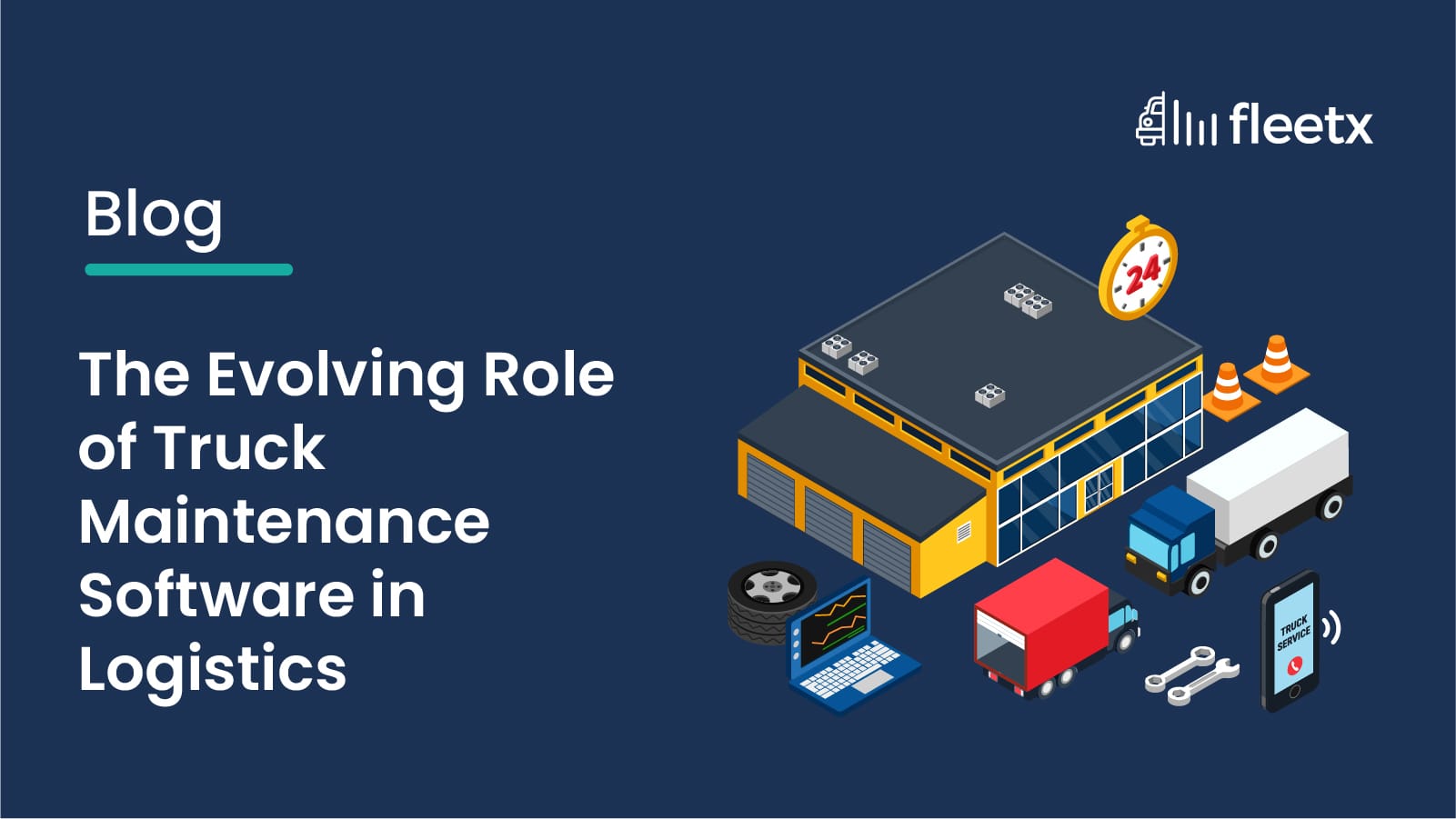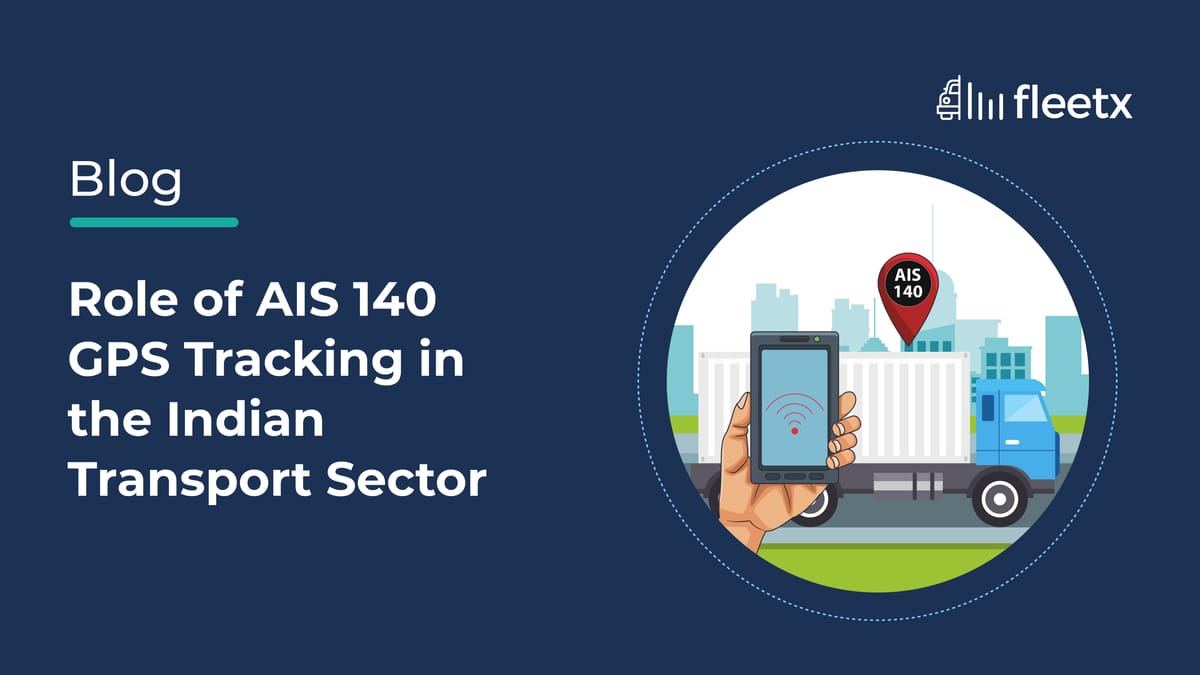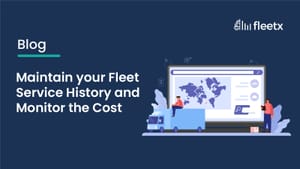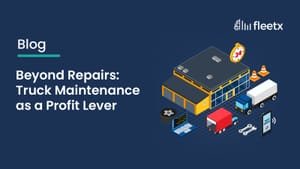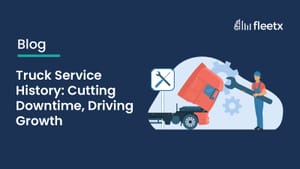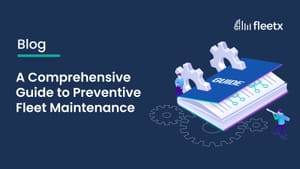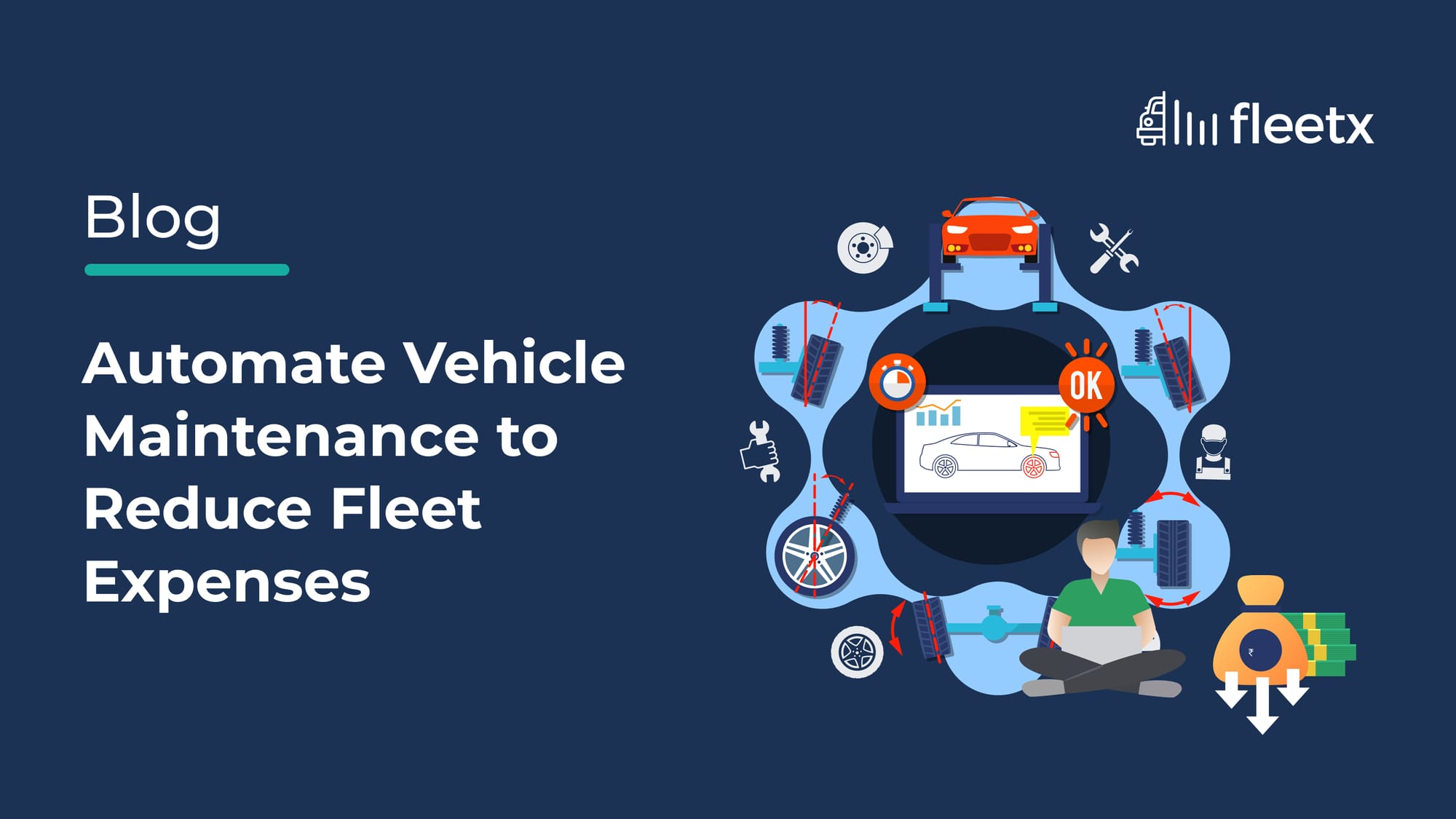
A fleet’s total cost of ownership (TCO) is heavily dependent on the variable costs of repair. To state a practical situation:
TCO = Purchase Cost + Repair Cost over Period − Resale Value
Given (Example):
- Purchase cost = ₹ 25,00,000
- Repair cost over 5 years = Let’s assume ₹ 3,00,000 (a typical figure for Indian HCVs over 5 years — you can replace this with actuals)
- Resale value after 5 years = ₹ 8,00,000 (average depreciation in India for a well-maintained truck is ~ 68% over 5 years)
Step 1 – Add Purchase & Repair Costs
₹25,00,000 + ₹3,00,000 = ₹28,00,000
Step 2 – Subtract Resale Value
₹28,00,000 − ₹8,00,000 = ₹20,00,000
TCO over 5 years = ₹ 20,00,000
A fleet cost analysis, as computed above, aims to understand how much each vehicle is costing the transport business and why. Repair costs account for a significant expense in determining the fleet’s overall value.
Now, repair costs have been steadily rising over the years. With rapidly evolving automotive upgrades, predictive strategies, and compliance audits, it’s crucial to keep a documented checklist of every maintenance task undertaken. Reports suggest that 37% transport businesses still use spreadsheets or other manual measures for tracking maintenance management. However, transporters can easily avoid unplanned downtime, overlooked warranties, and retain operational accountability by replacing such manual processes with a smart maintenance management platform.
Fundamentals of a Fleet Maintenance Mechanism
Several vehicle conditions trigger maintenance needs, including:
Telematics Fault Codes
Telematics converts vehicle diagnostic trouble codes (DTCs) into actionable alerts for fleet managers to execute proactive repairs, not relying on reactive ones only. Real-time data is utilized with machine learning for predictive analysis to notify fleet managers of potential issues that might lead to unplanned downtime.
Driver Recorded Issues
The vehicle driver is the first responder when any signal appears on the vehicle, which can include loud engine noise, flat tires, or others. Prompt reporting of such problems is crucial for the fleet managers or supervisors to initiate inspections or repairs, or complete replacement with a newer model in case of an older vehicle.
Vehicle Inspection Issues
A thorough vehicle inspection often leads to maintenance for unfamiliar engine sounds, tire wear and tear, fluid leakage, faulty lights, brake glitch, steering or suspension issues, or other external issues, thus preventing issues from escalating into expensive breakdowns.
Scheduled Maintenance Issues
A planned maintenance program eliminates the need for performing unnecessary tasks and incurring additional costs or operational disruptions, optimizing fleet uptime to ensure a consistent fleet performance.
Tools to Streamline the Maintenance Process
Several software or online tools can be utilized to ease preventive maintenance, such as:
Maintenance Work Order Software
Fleet management activities are significantly eased by shifting from paper trail management to automated work order software that facilitates real-time team collaboration and better communication on equipment maintenance tracking software.
Maintenance Scheduling Platforms
Such platforms provide centralized data and vehicle service history to enable data-driven planning that eases maintenance processes, resulting in lower fleet downtime, longer equipment lifespan, higher efficiency, and resource optimization.
App-Based Technician Logs
Equipment maintenance apps enable fleet managers and technicians to track repairs, manage scheduled inspections better, and streamline communication. Real-time mobile insights of the asset health parameters prevent expensive downtimes of heavy construction machinery such as bulldozers, excavators, cranes, and others.
Maintenance Data Categorization - A Strategic Edge
Ensuring fleet maintenance documentation for all maintenance initiatives aids in creating, tracking, and managing maintenance requests better, thus facilitating better decisions, lowering costs, and optimizing asset lifecycle. The classification includes:
Service History Management - A detailed record of the vehicle service history, spanning the asset’s lifespan, with work order details, technician notes, used equipment particulars, etc. The outcome of each task helps in acquiring insights into recurring issues, identifying trends and potential failures, and streamlining warranty claims and compliance reporting.
Work Order Management - Organize and control the lifecycle of maintenance tasks or requests by centralizing and automating the work order process. This enables the planning, prioritization, and execution of jobs systematically, thereby improving the commercial fleet maintenance process and implementing transparency in operations.
Vehicle & Parts Service History - Keeping the data trail of the vehicle and parts service history enables proactive decision-making regarding maintenance initiatives, such as scheduling oil changes, tire rotations, and other cost-reduction practices before they become severe problems for the fleet. Well-documented vehicle service history also aids in regulatory adherence, which increases the vehicle’s resale value and acts as a fleet maintenance tracker to improve the fleet’s operational efficiency.
Guide to Developing a Preventive Maintenance (PM) Checklist
Building a comprehensive fleet preventive maintenance log involves the following stages -
- Asset and Maintenance Needs Evaluation: Creating a list of vehicles or equipment, or parts that require regular checks is the first stage in the process. A sturdy vehicle maintenance planner includes the relevant knowledge of what to inspect during the process that aligns with the operational goals.
- Setting the Schedule: The frequency of each task has to be determined based on the truck manufacturer's specifications, usage sequence, and operating environments. Routine checks, which include cleaning, calibration, lubrication, or replacement, help prevent unexpected breakdowns, reducing maintenance costs.
- Selecting the Appropriate Checklist: Different industries use different variants of checklists. Some require visual checks, while other operations might need a detailed inspection of lubrication, parts, and calibration. Certain equipment might need daily checks, while in some cases, monthly or quarterly inspections might be the norm. Maintenance might also be dependent on the equipment usage levels. For instance, a truck’s engine oil might require replacement every 1000 kilometers. Calendar-based schedules are also quite common.
- Implement a CMMS: Using an automated maintenance management system simplifies the process of checklist implementation by generating repair or replacement alerts, assigning tasks, monitoring technician schedules, and maintaining historical data for centralized communication. Such streamlined systems enhance operational accountability.
- Improvement through Consistent Monitoring: Tracking the performance of the PM program through the reports and technician feedback helps in identifying recurring issues and taking proactive measures to prevent unnecessary failures. Timely review and updates refine the process over time.
How Technology Features Have Simplified Fleet Maintenance?
How Technology Features Have Simplified Fleet Maintenance?
A 2024 report by Siemens suggested that the cost of an hour’s downtime in the automotive sector has increased by 113%, and in heavy industry, the percentage goes up to 319%. However, implementing maintenance software cuts down on unnecessary fleet downtimes with several necessary tools that optimize the process -
Asset Inventory Management
Transporters can create a database on the heavy equipment fleet maintenance software consisting of all the company’s assets, including the part specifications, placement details, and historical maintenance records.
Work Order Tracking
An equipment maintenance tracking software streamlines the creation, assignment, and completion of work orders, enabling all team members to monitor maintenance tasks from beginning to end.
Maintenance Auto-Scheduling
Manual scheduling isn’t always foolproof due to human errors - parts of the process might be incomplete or left out completely. Fleet maintenance software automates such tasks, so that no part of the process is ever incomplete or missed out.
Analytics & Reporting
Fleet maintenance managers can generate several analytical reports, such as data on fleet tyre maintenance, to identify patterns and make data-based decisions on proactive maintenance needs.
Role of Predictive Analytics in Fleet Maintenance
Predictive analytics for fleet maintenance utilizes data, algorithms, statistics, machine learning, and data mining to predict fleet management issues like erratic driver behavior, vehicle/cargo safety issues, and predictive maintenance concerns. Instead of reactive actions, fleet operators employ predictive fleet management analytics to derive the following benefits -
Predictions Based on Equipment Specifications & Relevant
Details: ML in fleet management identifies specific failure scenarios, offering the status of individual vehicle parts and the circumstances.
Proactive Problem-Solving: Predictive analytics takes into account the vehicle’s real-time data, for instance, fleet tyre maintenance insights, to identify issues before they become expensive problems.
Time Savings: Fleet management and fleet analytics help save time by detecting issues in advance, sometimes just minutes before they cause an accident or cargo damage, thus providing more time to take corrective actions.
Cost Savings: Fleet owners can identify problems by observing the trends and behavioral patterns from telematics, parts and service history, and other data sources to save on maintenance costs.
Minimizing Vehicle Downtime: Predictive maintenance reduces downtime by eliminating needless repairs as maintenance is scheduled only when needed, increasing the vehicle’s availability.
Making More Efficient Drivers: An AI-driven predictive software enables preventive actions to minimize connected problems, improving the driver’s on-road safety and fleets avoiding the loss of their equipment for extended periods.
Fuel Consumption Control: AI-powered fleet management solutions can identify issues that lead to higher fuel consumption and initiate corrective measures to control the expenses.
Maintenance Intelligence - Transforming Fleet Management
With the fleet always on the go, following the maintenance schedules can be a daunting task for fleet managers. But with automated maintenance schedules and alerts, fleet maintenance software allows them to focus on the high-level fleet objectives.
Features such as service history aren’t an archive - but a compounding intelligence layer, powered by online work orders and equipment details. It builds a reliable foundation for predictive maintenance, cost savings, and improving uptime.
What is Total Cost of Ownership (TCO) in fleet management?
TCO represents the total cost of operating a vehicle over its lifecycle, calculated as: TCO = Purchase Cost + Repair Cost over Period − Resale Value. It factors in purchase price, maintenance expenses, and resale value to show the actual cost of ownership.
Why are repair costs a significant factor in TCO?
Repair costs can form a substantial part of a fleet’s operational expenses. Rising maintenance expenses, advanced automotive technology, and compliance requirements can quickly inflate TCO if not managed with preventive or predictive maintenance strategies.
How can predictive maintenance help reduce fleet TCO?
Predictive maintenance uses telematics, AI, and analytics to identify potential issues before they cause breakdowns. This proactive approach minimizes downtime, reduces unnecessary repairs, and extends the lifespan of vehicles.
What are the benefits of using maintenance management software over manual methods?
Automated maintenance platforms centralize service history, streamline work orders, schedule inspections, and provide predictive alerts—helping fleet managers avoid missed tasks, reduce downtime, and maintain operational accountability.

